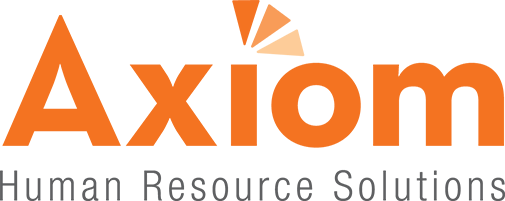
Strategies for Talent Attraction and Retention in Manufacturing
In the present-day manufacturing industry, addressing the challenges posed by a
competitive labor market and
high employee turnover rates, coupled with evolving talent models, manufacturing organizations need savvy strategies in attracting and retaining talents. Despite witnessing a significant number of new hires, job vacancies in the industry are reaching unprecedented levels. Consequently, organizations are exploring various strategies to fortify their talent attraction and employee retention approaches in the manufacturing sector.
To gain up-to-date insights into how the manufacturing industry is investing in overcoming the workforce challenge, UKG collaborated with Industry Week to conduct research in late 2022. This research involved a survey administered to 679 operations and HR managers, as well as 552 production-line workers. By analyzing the responses provided by the survey participants, we have identified four major barriers hindering talent attraction and retention in the manufacturing sector. Additionally, we have uncovered key actions that can assist manufacturers in surmounting these obstacles.
4 Strategies for Talent Attraction and Retention in Manufacturing
Barrier 1: Misalignment between employee preferences and organizational offerings.
Solution: Research highlights that a strained relationship with managers is a leading cause of attrition among production-line workers in manufacturing companies. Operations and HR managers recognize that employee turnover hampers future growth prospects. Our data indicates that a disconnected relationship can result in employee departures, adversely affecting company development. While HR and operations managers prioritize opportunities for advancement and a positive work culture, frontline workers value competitive salaries and work-life balance when selecting an employer. To bridge this gap, manufacturers should invest in competitive compensation plans and implement policies that enhance work-life balance, including alternative shift patterns and shift swapping without requiring approval. These actions address the workforce’s true needs and contribute to improved talent attraction and retention.
Key actions: Invest in competitive compensation plans. Implement policies to enhance work-life balance, such as alternative shift patterns and shift swapping.
Barrier 2: Balancing organizational requirements with employee needs.
Solution: Striving to offer competitive salaries, fill job openings, and expand the workforce while managing limited budgets poses a challenge for manufacturing organizations. Balancing business objectives with employee satisfaction may appear daunting. However, investing in the right scheduling solution can alleviate this barrier. Transitioning from manual processes to automated scheduling leads to improved employee engagement scores, increased productivity, and better management of labor costs. By addressing the needs of the modern frontline workforce with a consistent strategy and dynamic scheduling solutions, manufacturers gain a distinct competitive advantage.
Key action: Invest in a dynamic scheduling solution to enhance employee engagement, boost productivity, and optimize labor costs.
Barrier 3: Time-consuming scheduling that hampers focus on employees.
Solution: Survey respondents indicate that operations and HR personnel bear the majority of scheduling responsibilities in manufacturing organizations, with frontline supervisors and dedicated department schedulers playing significant roles. Managing workforce schedules often consumes more than three hours per week, with HR managers reporting 5-8 hours spent on schedule management. These demanding tasks limit frontline managers’ ability to concentrate on their employees, potentially resulting in decreased employee appreciation. By adopting automated scheduling solutions, manufacturers can expedite and streamline scheduling responsibilities, affording frontline managers more time to engage with their workforce.
Key action: Incorporate automated scheduling solutions to accelerate and streamline scheduling responsibilities.
Barrier 4: Misalignment and lack of understanding between HR and operations leadership.
Solution: In addition to the disconnect between employee desires and organizational offerings, a noticeable gap exists in alignment and understanding between HR and operations managers. Operations managers perceive talent-related issues as more significant impediments to organizational growth compared to HR managers. Although both HR and operations managers anticipate workforce expansion in the next two years, their approaches to talent attraction differ significantly. HR managers prioritize time-off packages and retirement benefits, while operations managers emphasize competitive salaries and a positive work culture. Addressing these differences presents an opportunity for HR and operations management teams to collaborate more effectively in creating an environment that fosters a fulfilling workplace experience for employees.
Key action: Prioritize communication and strategic planning between HR and operations managers to align on top strategies for attracting and retaining employees in the manufacturing industry.
Improving Employee Retention in Manufacturing: Key Strategies
To strengthen their relationship with employees and meet their needs effectively, organizations must overcome the barriers discussed earlier. Here are some strategic actions that managers and leaders can take:
- Offer competitive compensation plans and policies that promote work-life balance.
- Embrace technology, such as dynamic scheduling solutions, to enhance operational efficiencies and boost productivity in the workforce.
- Implement automated scheduling solutions to streamline and speed up scheduling responsibilities, freeing up time for managers and supervisors.
- Prioritize effective communication and collaboration between HR and operations managers to ensure alignment in talent attraction and retention strategies.
By implementing these tactics, organizations can improve employee retention in the manufacturing industry.
Recognizing the significance of investing in employees is essential for the long-term success of any business, particularly in the current competitive labor market. Manufacturers must seize this opportunity to align their business objectives with the right technological solutions to support their frontline workforce, ultimately driving future organizational growth. By prioritizing the needs of their employees and leveraging appropriate resources, manufacturers can pave the way for a prosperous future.
With the help of
Axiom, manufacturers can intelligently schedule their workers to meet the ever-changing demands of production. They will have real-time visibility into accurate people data, budget constraints, and staffing needs. Furthermore, this partnership empowers employees to be more autonomous while simultaneously making the scheduling process more transparent.
Get in touch with us today and find out how your business can benefit from our smarter scheduling solutions.

